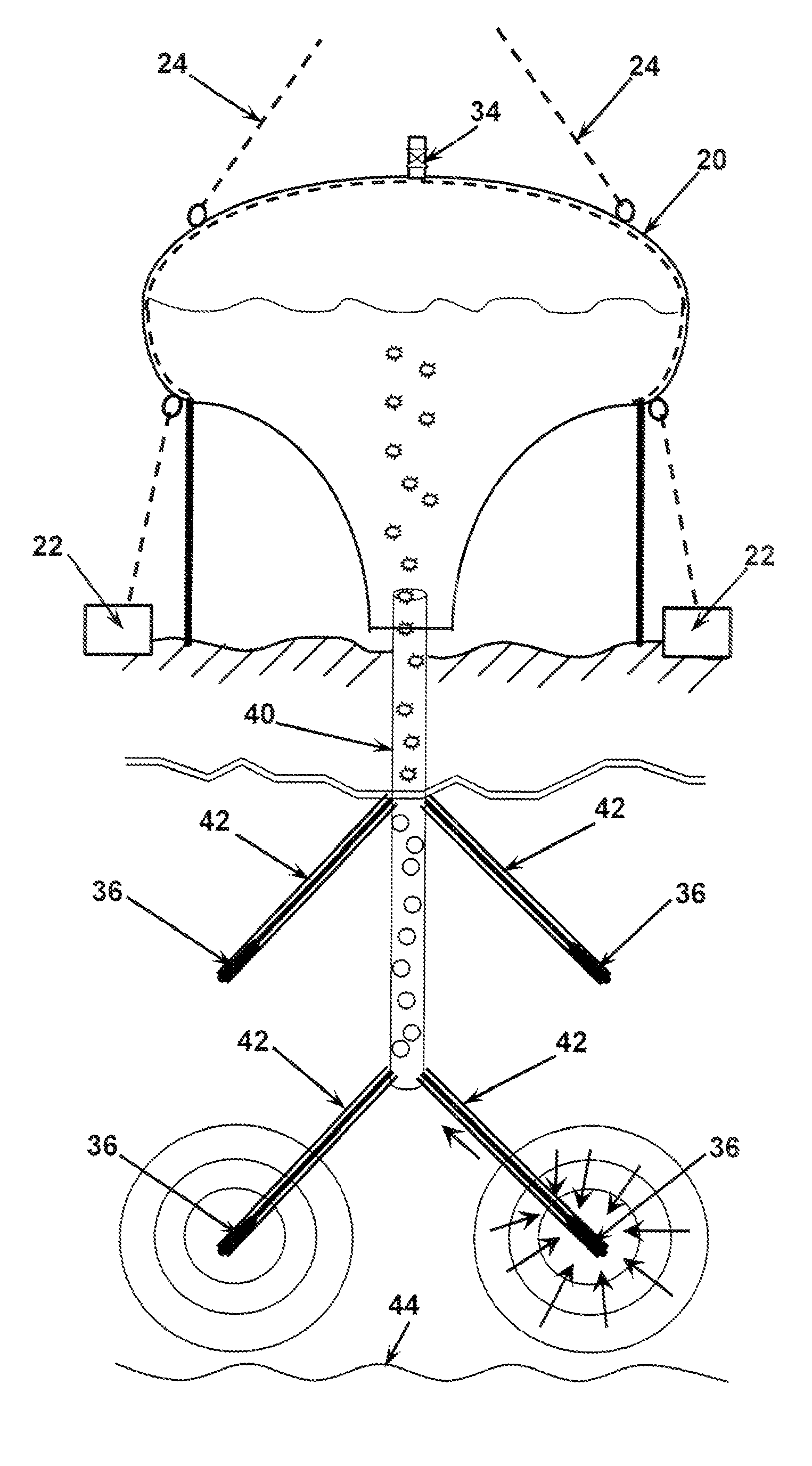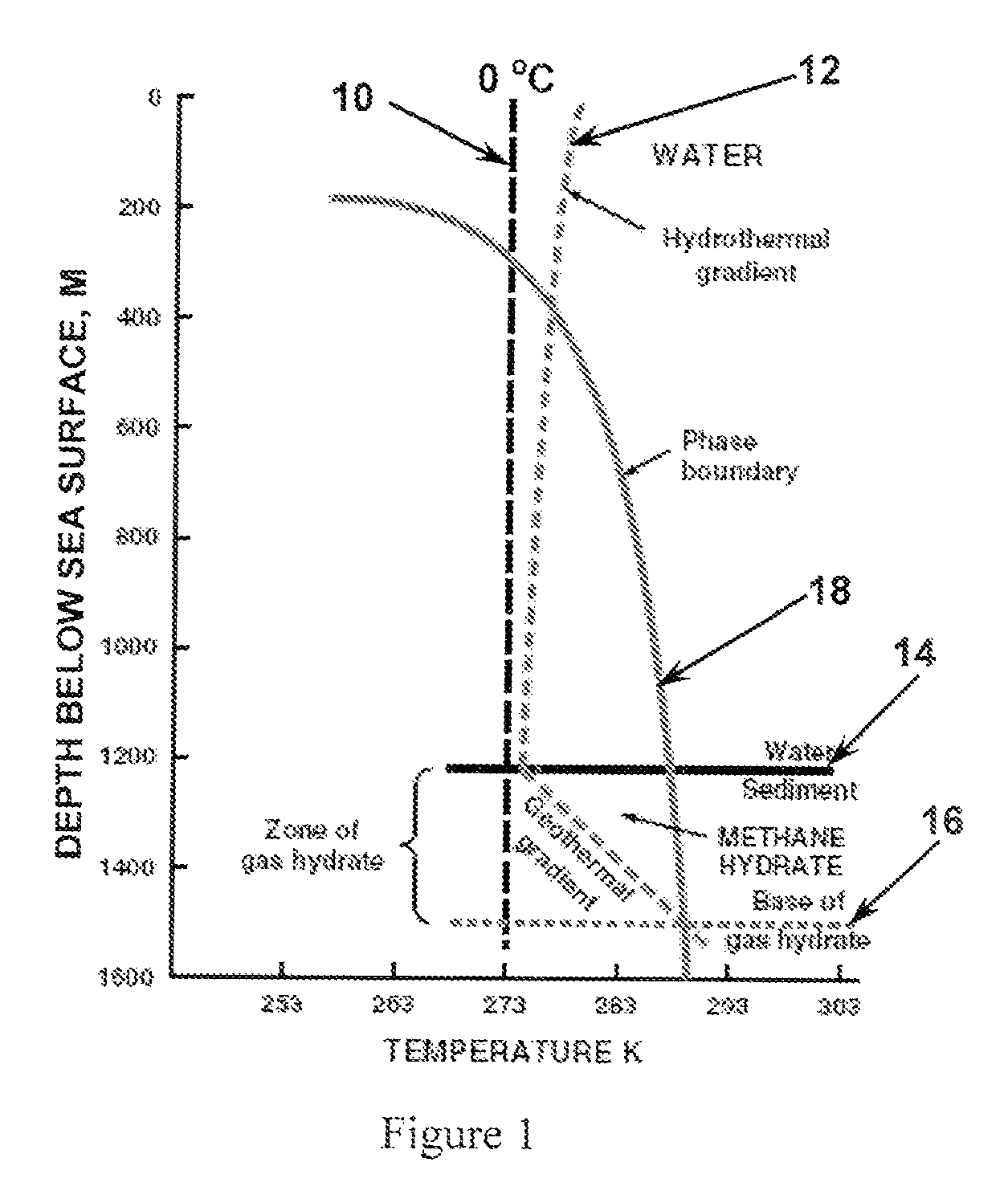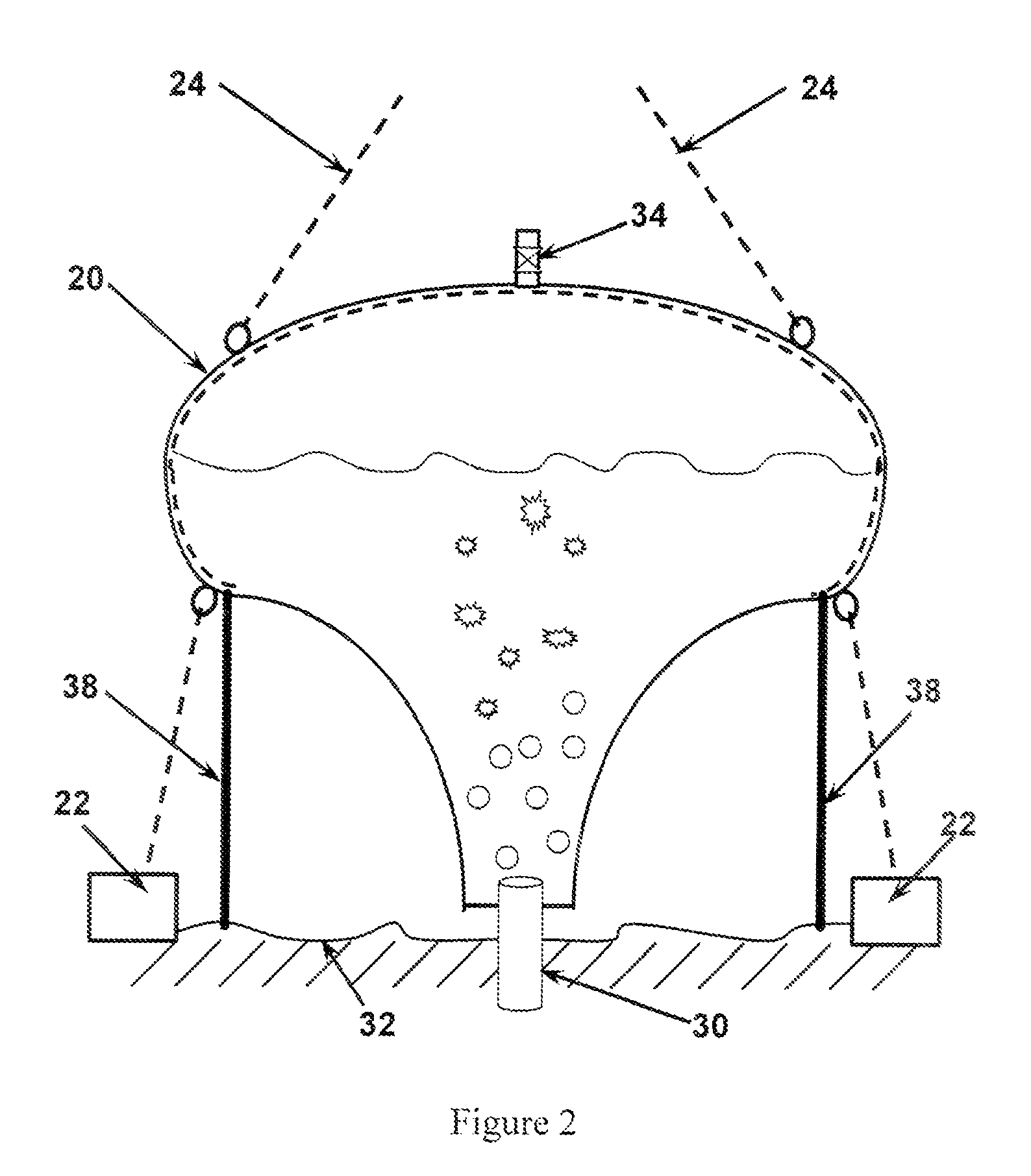Extracting gas hydrates from marine sediments
a technology of gas hydrates and marine sediments, applied in the direction of well accessories, sealing/packing, boreholes/well accessories, etc., can solve the problems of low productivity of gas hydrate gas production from marine sediments, no viable technologies, etc., and achieve the effect of reducing the risk of gas hydrate spillage, and reducing the risk of gas spillag
- Summary
- Abstract
- Description
- Claims
- Application Information
AI Technical Summary
Benefits of technology
Problems solved by technology
Method used
Image
Examples
Embodiment Construction
[0033]The embodiments discussed herein are merely illustrative of specific manners in which to make and use the invention and are not to be interpreted as limiting the scope of the instant invention.
[0034]While the invention has been described with a certain degree of particularity, it is to be noted that many modifications may be made in the details of the invention's construction and the arrangement of its components without departing from the spirit and scope of this disclosure. It is understood that the invention is not limited to the embodiments set forth herein for purposes of exemplification.
[0035]Referring to the drawings in detail, FIGS. 2 through 5 illustrate diagrammatic views of one preferred process in accordance with the present invention.
[0036]It is known that hydrates are approximately 10% lighter than seawater. Once released from sea floor sediments, hydrocarbon gases or re-formed hydrate particles move upward in still seawater due to buoyancy. Hydrocarbon gases may...
PUM
 Login to View More
Login to View More Abstract
Description
Claims
Application Information
 Login to View More
Login to View More - R&D
- Intellectual Property
- Life Sciences
- Materials
- Tech Scout
- Unparalleled Data Quality
- Higher Quality Content
- 60% Fewer Hallucinations
Browse by: Latest US Patents, China's latest patents, Technical Efficacy Thesaurus, Application Domain, Technology Topic, Popular Technical Reports.
© 2025 PatSnap. All rights reserved.Legal|Privacy policy|Modern Slavery Act Transparency Statement|Sitemap|About US| Contact US: help@patsnap.com



